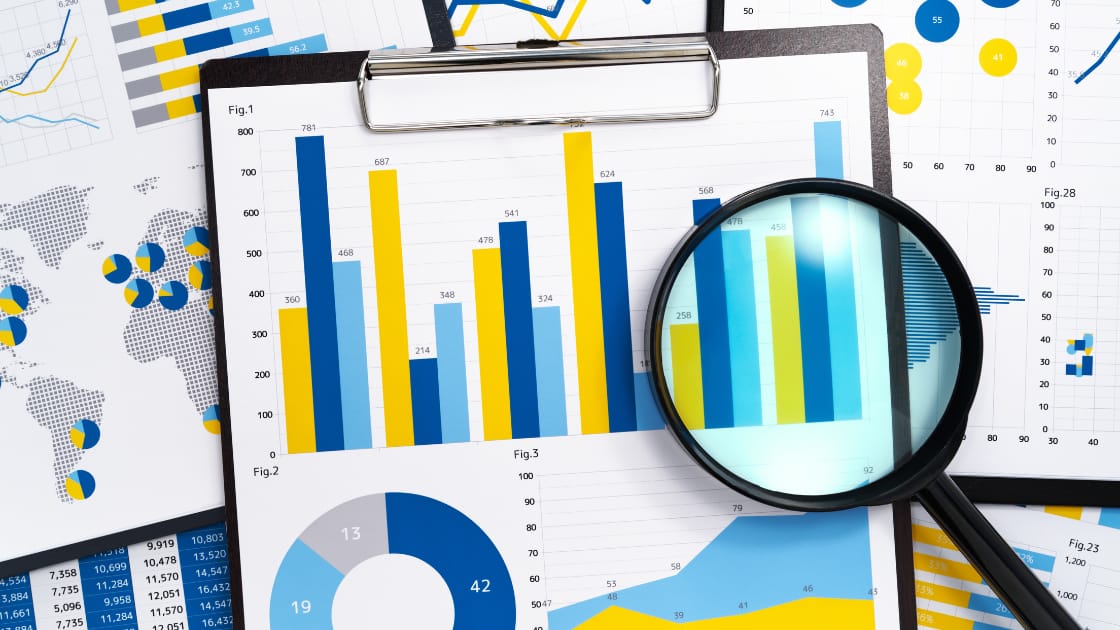



January 18, 2023
Data is being generated at lightning speed. According to Statista, the total amount of data ‘created, captured, copied, and consumed globally’ was 64.2 zettabytes in 2020; and is predicted to reach 181 zettabytes by 2025. This amount of data can feel overwhelming, even for businesses, if you don’t know where to start.
Data aggregation is a critical process for any business that involves gathering and measuring information to derive insights and inform decision-making.
In this article, we will explore what data and data aggregation is, why it is essential, the different types of data aggregation methods, and some key considerations for aggregating data effectively.
Data refers to any set of information or facts that can be aggregated, stored, and analyzed to derive insights or make informed decisions. Data can take various forms, including text, numbers, images, audio, and video. In its raw form, data is often meaningless and difficult to interpret.
However, when data is organized, processed, and analyzed, it can provide valuable insights and help us make better decisions.
There are two main types of data: quantitative and qualitative.
In addition to these types, data can also be classified as structured or unstructured. Structured data refers to data that is organized in a specific format, such as a spreadsheet or database, while unstructured data refers to data that does not have a specific format, such as social media posts or email messages.
Data Aggregation is the process of gathering information from various sources for a specific outcome. It involves the systematic aggregation, recording, and analysis of information, which can be used to make informed decisions or draw conclusions. The aggregated data can be either quantitative or qualitative, and it can be analyzed using statistical and analytical tools to extract insights and identify patterns.
Data aggregation is an essential component of many fields, including market research, social science, healthcare, and business. It helps organizations to understand their customers, evaluate their performance, and make data-driven decisions.
Now that you know what data aggregation is, let’s look at some of the benefits of collecting and analyzing data.
Here are some reasons why we need data aggregation:
Data aggregation allows us to gather information about different aspects of our world, including social, economic, environmental, and health-related phenomena. By understanding these phenomena, we can develop better policies, practices, and interventions that can improve the quality of life for individuals and communities.
Data aggregation provides us with insights that can inform decision-making across various domains, such as business, government, and healthcare. By using data to inform decision-making, we can make more informed choices grounded in evidence and more likely to produce positive outcomes.
Data aggregation allows us to identify trends and patterns that might not be apparent otherwise. By analyzing data over time, we can identify changes in behaviour, preferences, and attitudes, which can inform the development of new products, services, and policies.
Data aggregation is critical for evaluating the effectiveness of programs and interventions. By aggregating data before and after implementing an intervention, we can assess its impact and determine whether it successfully achieved its intended outcomes.
While the benefits are plenty, what kind of methods can you use to aggregate and analyze data? Let’s understand.
The two distinct approaches to aggregating data are the primary data aggregation method and the secondary data aggregation method.
It involves collecting data directly from the source for a specific research project or purpose. This method typically involves designing and administering surveys, conducting interviews, or observing and recording behaviour. Primary data Aggregation can be time-consuming and costly but provides researchers with data that is tailored to their research needs. Examples of primary data Aggregation methods include surveys, interviews, experiments, and observations.
It involves gathering data that other researchers, organizations, or sources have already aggregated. This data can be obtained from various sources such as published reports, academic journals, government agencies, or online databases. Secondary data aggregation is generally less expensive and faster than primary data aggregation. However, researchers must ensure that the data they are using is relevant and accurate for their research needs. Examples of secondary data aggregation methods include literature reviews, meta-analyses, and data mining.
Let’s understand the data aggregation techniques individually:
Surveys are one of the most common methods of data aggregation. They can be conducted through different channels, including online platforms, paper forms, and phone interviews. Surveys are designed to collect information on a specific topic from a sample of individuals. Surveys can collect quantitative data, such as ratings or Likert scales, or qualitative data, such as open-ended responses. Surveys are typically easy to administer and can collect data from a large number of respondents. However, the accuracy of the data collected can be affected by issues such as response bias and sample bias.
Interviews are another common method of data aggregation. They can be conducted in person, over the phone, or online. Interviews are typically used to collect qualitative data, such as opinions, attitudes, and beliefs. They can also aggregate quantitative data, such as ratings or Likert scales. Interviews are often conducted with a small number of participants, and the data collected is usually in-depth and rich in detail. However, the data aggregated through interviews can be affected by the interviewer and social desirability biases.
Observations are a method of data aggregation where the researcher observes and records behaviour or activities. This method is often used in naturalistic settings, such as schools, parks, or workplaces. Observations can be used to collect both quantitative and qualitative data. Observations can be time-consuming and may require trained observers to ensure that the data aggregated is accurate. However, the data aggregated through observations can provide valuable insights into behaviour and can be used to generate hypotheses for further research.
Experiments are a method of data aggregation where the researcher manipulates a variable to determine its effect on an outcome. Experiments can be conducted in a laboratory or in a naturalistic setting. Experiments are often used to aggregate quantitative data, and they provide a high level of control over the research environment. However, experiments can be time-consuming and expensive to conduct, and the data aggregated may not be representative of real-world situations.
A literature review involves gathering and analyzing existing research studies and publications on a specific topic. The goal is to identify gaps in knowledge, and potential biases in existing research, and to gain a better understanding of the current state of knowledge on the topic.
A meta-analysis is a statistical technique that combines the results of multiple studies on a particular topic to arrive at a more comprehensive and accurate understanding of the overall effect. Meta-analyses typically involve a systematic review of the literature, followed by a statistical analysis of the data from the included studies.
Data mining involves using statistical analysis techniques to identify patterns and relationships in large datasets. It can be used to extract insights and knowledge from large amounts of data and can help researchers identify trends and patterns that may not be immediately apparent.
While each of the above methods of aggregating data has its own pros and cons, it is important to understand, as a business, which method can help maximize the output and provide the most reliable results to achieve growth. By employing appropriate data aggregation techniques and tools, businesses can ensure the accuracy of their findings, make meaningful conclusions, and generate useful insights that can drive decision-making in various domains.
Read more: